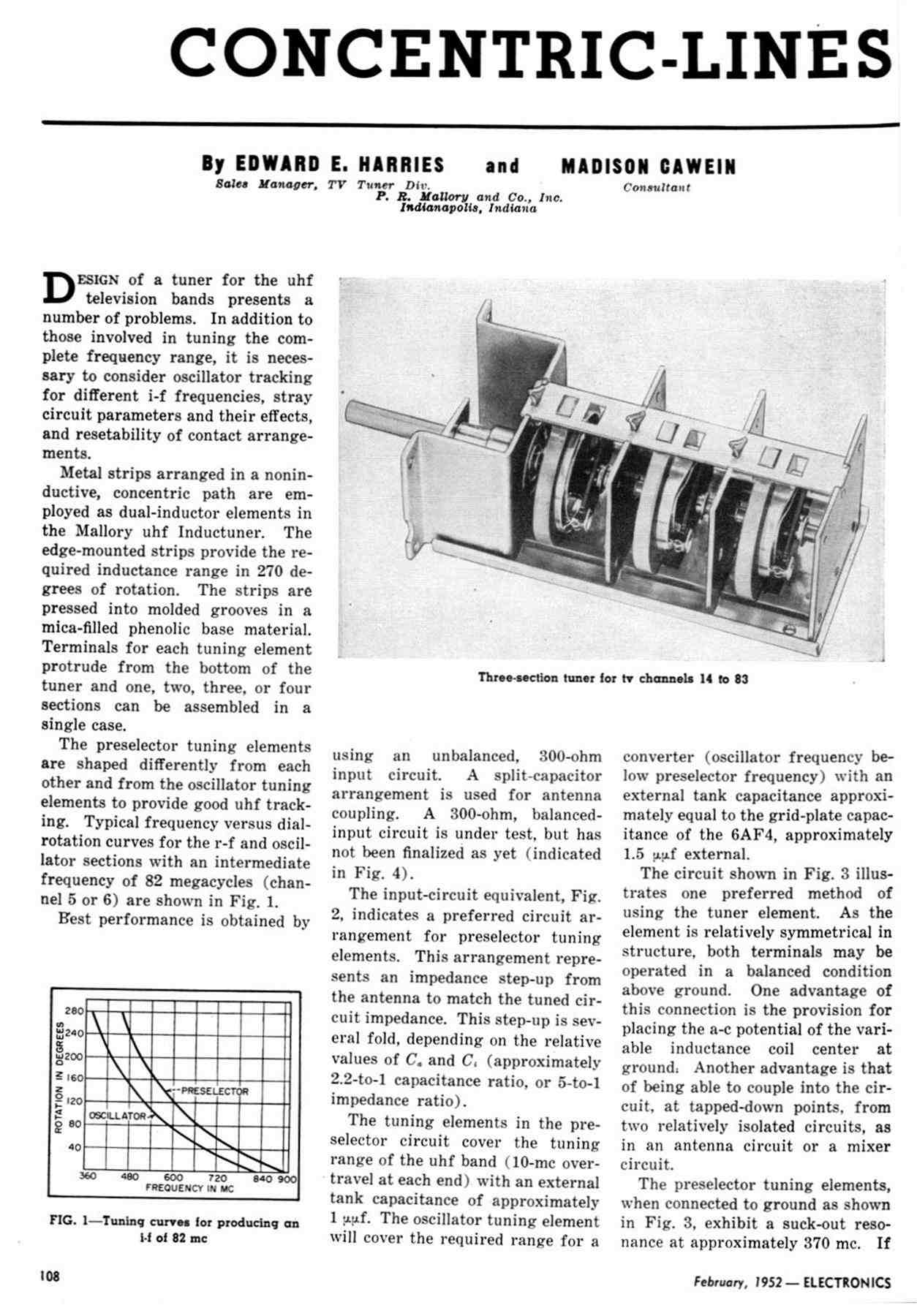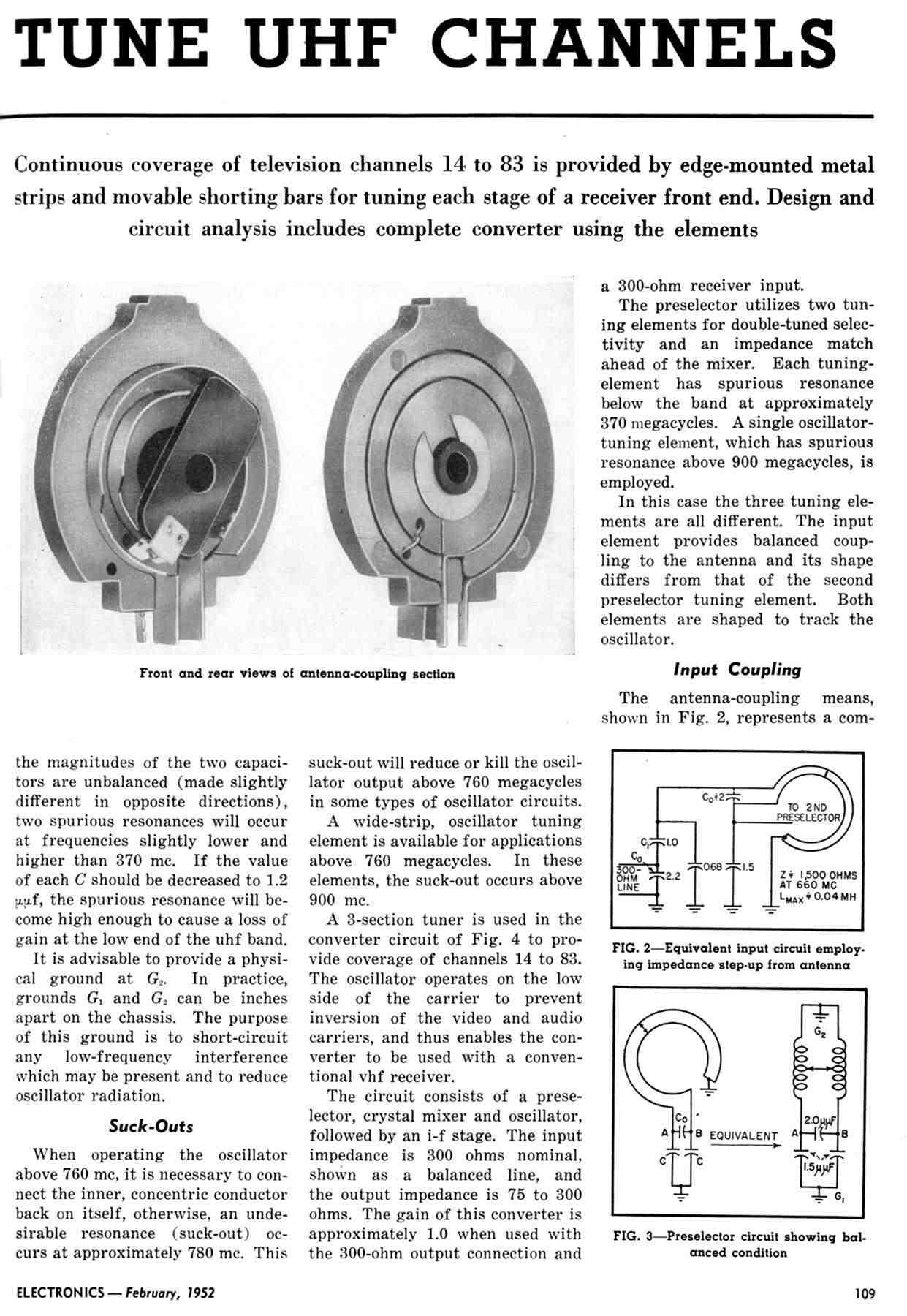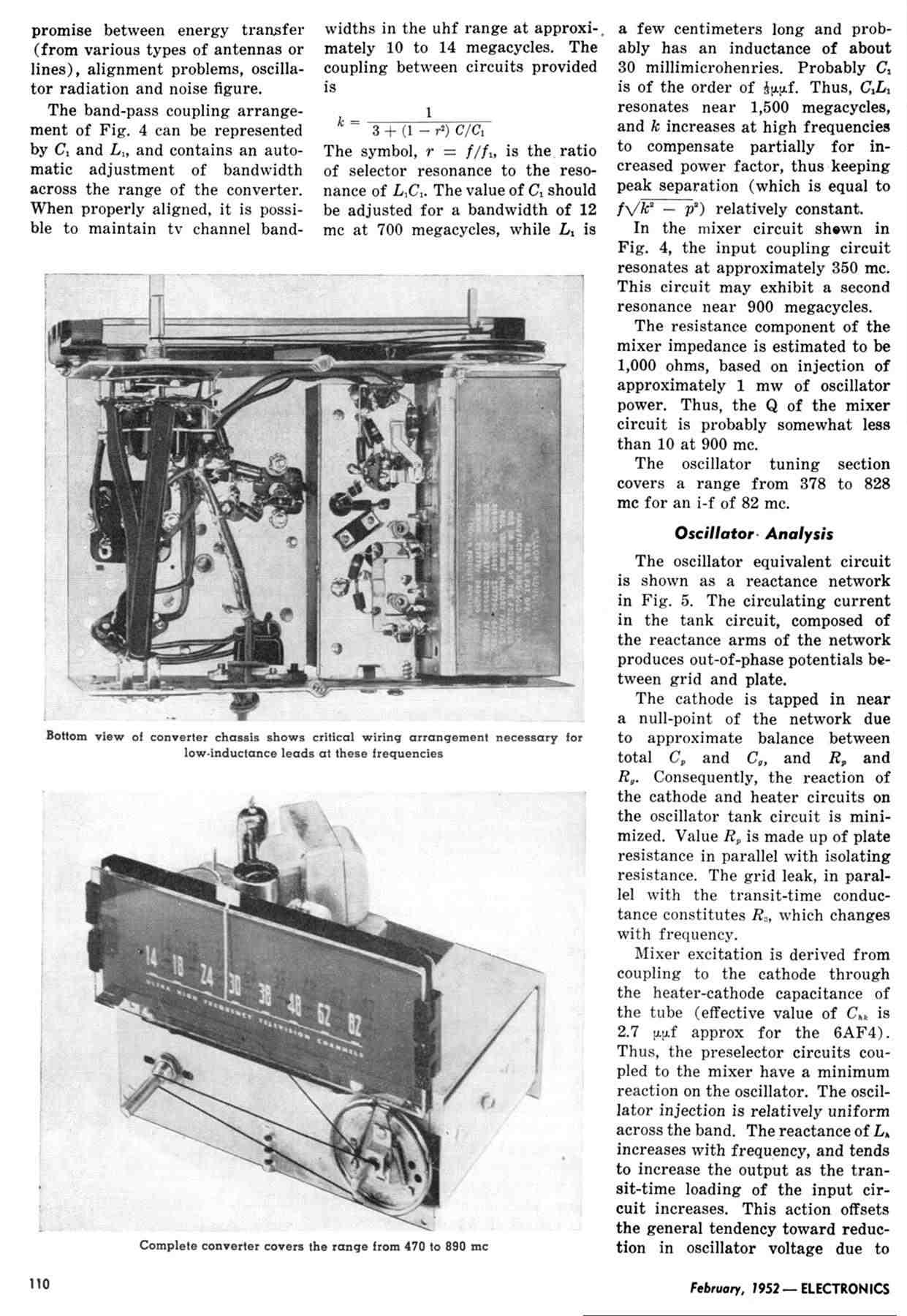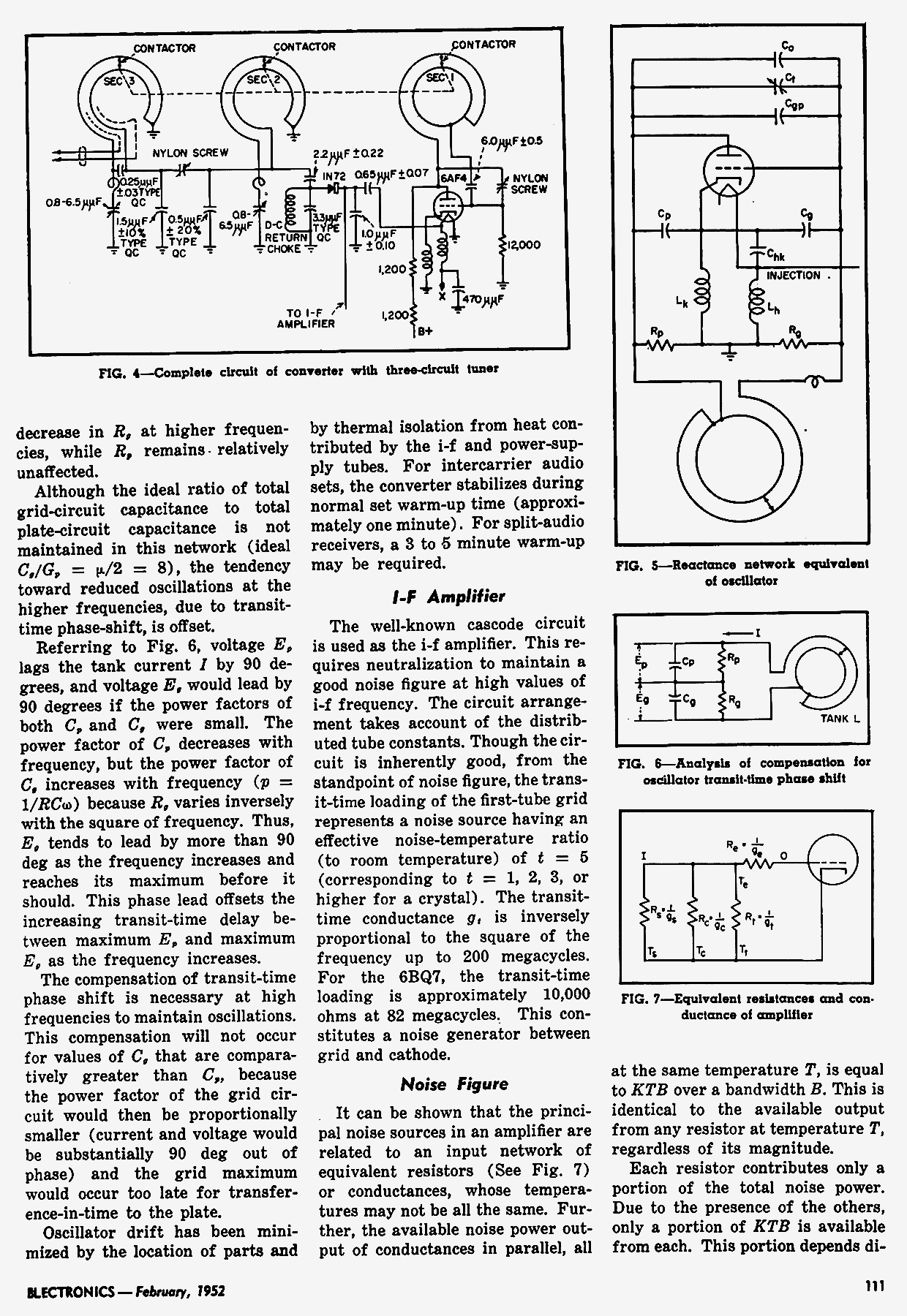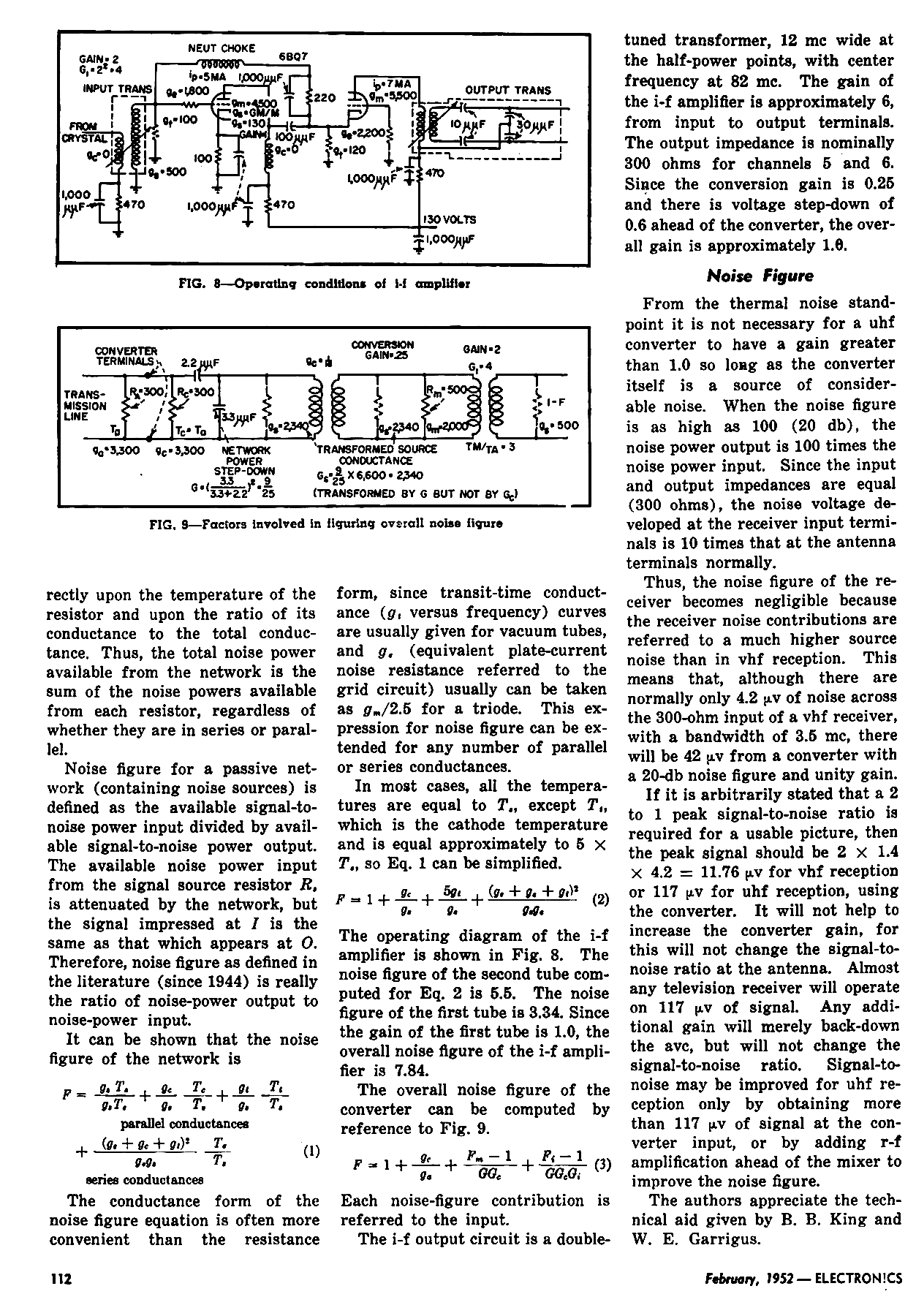mallory: Inductuner and Inputuner
mallory: Inductuner and Inputuner
Fellow Radiophiles,
Ghirardi and Johnson have instructions for aligment of DuMont's TV VHF "Inputuner" in their 1952 edition of "Radio and Television Receiver Troubleshooting and Repair".
The "Inputuner" VHF TV tuner design is based on the variable inductance Mallory-Ware "Inductuner".
The variable inductance is based on the principle of shorting out unused sections of of very high Q coil.
The advantage of shorting turns instead of simply moving a tap with the unused coil section left open is that the unused coil will probably have self resonance in the range where the low inductance section of the coil being used is operating.
The Variometer method that was popular in the 1920's, where two equal inductors are continuously varied in each other's field, such that at one orientation their fields reinforce for a net inductance that is nearly four times the inductance of the either coil, and 180° away they cancel and present a very small, but lossy inductance.
The Variometer method also suffers from poor Q at low inductance values.
Note how in the Inputuner, the trimmer coils are adjusted for the higher frequency end of the dial, and the trimmer capacitors are adjusted for the low frequency end of the dial. This is the usual procedure when variable inductors are used. The opposite procedure should be more familiar because most tuners use variable capacitors.
I scanned the short article about the Inductuner and Inputuner from page 512 chapter 14. I performed OCR to get text embedded text behind the scanned images. This text can be selected, searched, or copied for translation to other languages using Google-translate.
Regards,
-Joe
To thank the Author because you find the post helpful or well done.
Mallory-Ware Inductuner (DuMont Inputuner)

Here is a picture of the Inductuner in my Crosley 9-407 after I replaced its broken shaft. The Crosley 9-407 is a clone of the DuMont RA-103, so it can be considered one of the many DuMont designs that used the Inductuner in the 1940s and early 1950s.
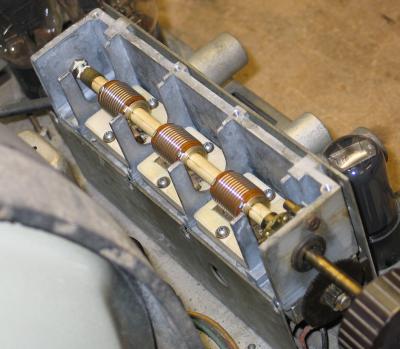
RMorg has pictures, information, schematics, and service literature for many early DuMont sets using the Inductuner. The early versions used roller inductors like the one shown above, while later ones used spiral inductors. One thing I've never understood about the roller inductors is that one of them is wound with the opposite sense of helix (like a right-hand thread instead of a left-hand thread), so two of the sliders move in one direction while tuning, and the third goes in the opposite direction. There must have been some good reason for this, but it is not obvious to me.
I have one other set using the Inductuner, a DuMont RA-101 .
Best regards,
Tom
To thank the Author because you find the post helpful or well done.
Mallory TV tuner

Here is the article I found in Electronics, February 1952, about a TV tuner using inductuners. By the way, this tuner also uses the General Electric 1N72 germanium mixer diode. I hope to find more on its conversion noise in the 1951 volume.
To thank the Author because you find the post helpful or well done.

